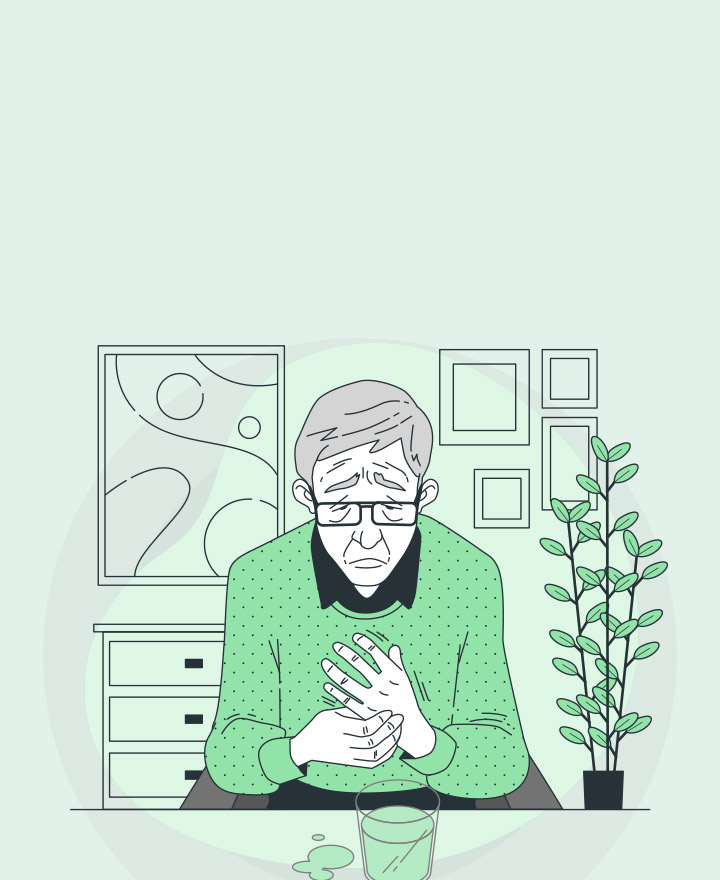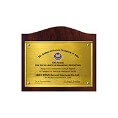

Hand Pain Causes, Symptoms and When to See a Doctor
Hand pain is surprisingly common and can be caused by anything such as from daily overuse to conditions such as arthritis, carpal tunnel syndrome, or nerve issues. Sometimes, it’s just strain—but other times, it signals something more serious. Ever noticed numbness, swelling, or pain that gets worse at night? These could be clues. In this blog, we’ll break down the most common reasons for hand pain, what symptoms to watch for, and when it’s time to seek help.
Causes of Hand Pain
Below are some of the most common hand pain reasons, grouped by type, to help you better understand what is the source of your pain:
1. Tendon and Joint Conditions
• De Quervain Tenosynovitis:
This condition causes swelling and pain on the thumb side of the wrist, due to repetitive hand movements like lifting heavy objects or gardening.
• Skier's Thumb:
An injury to the ligament at the base of the thumb, typically resulting from a fall while holding a ski pole.
• Trigger Finger:
Characterised by a "catching" or "locking" sensation in the finger, often due to inflammation of the tendon sheath.
2. Nerve-Related Issues
• Carpal Tunnel Syndrome:
Occurs when the median nerve is compressed at the wrist, which causes numbness, tingling, and weakness in the hand.
• Peripheral Neuropathy:
Damage to the peripheral nerves, often due to diabetes, causing pain, tingling, or numbness in the hands.
3. Other Causes
• Arthritis:
Inflammation of the joints that leads to swelling and hand stiffness. Arthritis can also cause hand muscle pain due to reduced joint mobility and muscle strain.
• Fractures:
Broken bones in the hand can cause immediate pain and swelling.
• Ganglion Cysts:
Non-cancerous, fluid-filled lumps that can develop along the tendons or joints of the wrist or hand.
• Lupus:
An autoimmune disease that leads to joint pain and swelling, including in the hands.
• Raynaud’s Phenomenon:
A condition where small blood vessels in the fingers constrict in response to cold or stress, and leads to colour changes, numbness, and pain.
• Traumatic Injury:
Severe injury, such as cuts, burns, or impact, that results in pain and swelling.
Symptoms to Watch Out For
Recognising these early signs can aid in timely diagnosis and treatment:
1. Numbness and Tingling
Persistent numbness or tingling, especially in the thumb, index, middle, and part of the ring finger, may indicate Carpal Tunnel Syndrome. This condition arises from pressure on the median nerve at the wrist.
2. Pain with Movement
Experiencing pain during specific movements, such as gripping or twisting, can be a sign of De Quervain Tenosynovitis. The condition involves inflammation of tendons on thumb side of the wrist.
3. Swelling or Lumps
The presence of a visible lump or inflammation on the wrist or hand may suggest a Ganglion Cyst. These are non-cancerous fluid-filled sacs that can cause pain if they press on nearby nerves.
4. Joint Stiffness and Swelling
Morning stiffness, joint swelling, and pain that increases with movement are characteristic of arthritis, particularly Rheumatoid Arthritis.
5. Locking or Catching Sensation
A finger that locks or catches in a bent position, often referred to as Trigger Finger, can be a sign of tendon inflammation. This condition may cause a popping sensation when straightening the finger.
6. Pain After Repetitive Use
Pain that develops after repetitive use, such as typing or lifting, can indicate Tendinitis. This involves inflammation of the tendons and can lead to discomfort and swelling near the affected area.
Treatment Options
Here are common treatment approaches for different hand problems:
1. De Quervain Tenosynovitis
• Rest and avoid activities that worsen symptoms
• Try wrist splints to immobilise the thumb and wrist
• Nonsteroidal Anti-Inflammatory Drug (NSAID) for pain and inflammation
• Corticosteroid injections for persistent pain
• Surgery to release the tendon sheath if conservative treatments fail
2. Skier's Thumb- Ulnar Collateral Ligament Injury (UCL)
• Thumb splint or cast immobilisation for mild injuries
• Physical therapy after immobilisation
• Surgery if the ligament is completely torn or unstable
3. Trigger Finger
• Rest and splinting of the affected finger
• NSAIDs to reduce inflammation and pain
• Corticosteroid injections to decrease swelling
• Surgical release of the tendon sheath if symptoms persist
4. Carpal Tunnel Syndrome
• Wrist splints, especially at night
• Activity modification to reduce repetitive strain
• NSAIDs for pain relief
• Corticosteroid injections to reduce nerve swelling
• In severe cases, surgery to release the transverse carpal ligament
5. Peripheral Neuropathy
• Managing underlying causes like diabetes
• Medications such as pain relievers, antidepressants, or anticonvulsants
• Physical therapy to improve strength and balance
• Avoiding alcohol and toxins that worsen symptoms
6. Arthritis (Osteoarthritis and Rheumatoid Arthritis)
• NSAIDs and analgesics to relieve pain and inflammation
• Physical and occupational therapy
• Disease-modifying drugs for rheumatoid arthritis
• Joint protection and use of assistive devices
• Surgery for severe joint damage
7. Fractures
• Immobilisation with casts or splints
• Pain management with NSAIDs or prescription medications
• Surgery for displaced or complex fractures
• Physical therapy during recovery
8. Ganglion Cysts
• Observe if cyst is painless and not limiting function
• Wrist splints to reduce irritation
• Aspiration to drain fluid, though cysts may recur
• Surgical removal if cyst causes pain or functional issues
9. Lupus
• Immunosuppressive and anti-inflammatory medications
• NSAIDs for joint pain and swelling
• Regular monitoring and management by a rheumatologist
• Lifestyle adjustments to avoid flare-ups
10. Raynaud’s Phenomenon
• Avoiding cold exposure and stress
• Keeping hands warm with gloves and warm clothing
• Medications to dilate blood vessels in severe cases
• Quitting smoking and managing underlying conditions
11.Traumatic Injury
• Immediate first aid: Rest, Ice, Compression, Elevation (RICE)
• Medical evaluation to assess damage
• Immobilisation or surgery depending on severity
• Pain management and physical therapy during healing
When to Seek Medical Help
While mild hand pain can often improve with rest and home care, it’s important to consult a healthcare professional if you experience:
• Severe or worsening pain that doesn’t improve with over-the-counter painkillers
• Numbness, tingling, or weakness that affects your ability to use your hand
• Swelling, redness, or warmth around the joints or injury site
• Visible deformity or inability to move your fingers or wrist
• Symptoms that persist for more than a few days or come on suddenly after trauma
• Signs of infection such as fever, pus, or increasing pain
Conclusion
Hand pain can range from something minor to a sign of a more serious condition. If you find yourself wondering, “why my left hand is paining”, or “why is my right hand tingling,” understanding the causes, symptoms, and treatment options encourages you to take the right steps toward recovery.
One of the important components of our overall wellness is also being financially secured. Healthcare emergencies can happen any time, but a good health insurance policy can protect you from such uncertain situations. To know more about Wellness and other health related tips, visit the wellness corner.
Sources: webmd.com, healthline.com, mayoclinichealthsystem.org, mayoclinichealthsystem.org, mayo.edu, mayoclinic.org, niams.nih.gov, hopkinsmedicine.org
Disclaimer: This blog provides general information and discussions about health and related subjects. The information and other content provided in this blog, website or any linked materials are not intended and should not be considered or used as a substitute for medical advice, diagnosis or treatment. Kindly contact your doctor before starting a new medicine or health regime.
Related Articles
Understanding the Aches and Pains during Arthritis
How to Stop Joint Pain when it Rains?
Post-Traumatic Stress Disorder
Exercises for Sciatica Pain Relief
Published on June 24, 2025















 Health Insurance
Health Insurance  Travel Insurance
Travel Insurance  Car Insurance
Car Insurance  Cyber Insurance
Cyber Insurance  Critical Illness Insurance
Critical Illness Insurance
 Pet Insurance
Pet Insurance
 Bike/Two Wheeler Insurance
Bike/Two Wheeler Insurance  Home Insurance
Home Insurance  Third Party Vehicle Ins.
Third Party Vehicle Ins.  Tractor Insurance
Tractor Insurance  Goods Carrying Vehicle Ins.
Goods Carrying Vehicle Ins.  Passenger Carrying Vehicle Ins.
Passenger Carrying Vehicle Ins.  Compulsory Personal Accident Insurance
Compulsory Personal Accident Insurance  Travel Insurance
Travel Insurance  Rural
Rural